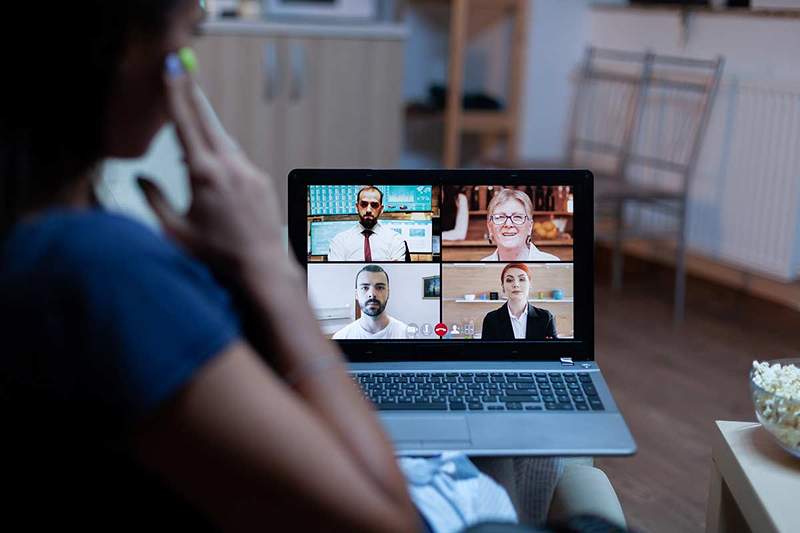4 reasons that explain Zoom's fatigue and its solutions

- 4058
- 527
- Charles Fay
Mario has a meeting at 5:00 p.m. You have to treat important points that affect your company. At the meeting their two superiors and three employees will be. Mario fixes, sits in front of the computer, activates the program and starts the meeting. The next day two more meetings await you. In total, during the week you will have seven online meetings. However, for some reason that he does not know, Mario is more tired of online meetings than face-to-face. Welcome to the "Zoom Fatigue"!
From Stanford University (EE.UU), the doctor in Psychology and director of the Virtual Human Interaction Lab, Jeremy Bailenson, proposes four explanations for which video call meetings can produce greater fatigue than face -to -face. This phenomenon has been baptized as "zoom fatigue" since it is the most widespread program to carry out this type of encounters. Let's see why this type of meetings tire us!
Content
Toggle- Zoom fatigue
- Too much visual contact
- Nonverbal language overload
- Mirror effect
- Scarce mobility
- Zoom fatigue: new times
- References
Zoom fatigue
Too much visual contact
In a conventional meeting we can deviate our eyes for a few seconds several times without anyone being missed or realized, especially if we are a few. In online applications, The look is usually more maintained, whether we observe who speaks as if they observe us. Being able to see all the participants on a screen is easy to realize both the one that is attentive and of the one who is distracted. Therefore, it is created to be aware of the one who speaks.
On the other hand, this visual contact is generated within a framework of an atypical visual closeness. When we go to a traditional meeting, our interlocutors are usually more than two meters from us, even if someone exposes a topic, they can find several more meters. In digital meetings, although the distance is great, The feeling that the camera produces is of great closeness, since we observe the face of the other person very closely. This fact does not occur in face -to -face meetings, so We can feel that our personal space is invaded.
Batenson says that the interlocutor's face we see so close that they are usually close spaces reserved for people with whom we usually have a more intimate relationship. At this point two factors stand out: closeness and look. When we are very close to someone, Our mechanism is to look away, but in digital meetings this is not possible, So there is a voltage overload that can end up producing great wear.
Advice: Batenson advises not to use the full screen, as well as get the camera a bit and even use an external keyboard to get away from the screen.
Nonverbal language overload
Another explanation argued by the researcher is the overload of nonverbal language. In a traditional meeting all gestures are exposed, however, at an online meeting We must strive so that nonverbal language is recorded in a very specific framework of vision. This aspect wears both the one who speaks and the one who attends. The one who speaks must ensure that his nonverbal language is well perceived and the one who attends will have to strive to decipher him.
An example that Bailenson puts are our head signs with the head. Normally we can settle two or three times when we agree with some idea, but in online meetings we can nod twice and more markedly so that the interlocutor captures our message.
Advice: The recommendations offered by Bailenson range from taking breaks to holding meetings if possible.
Mirror effect
The mirror effect caused by video calls can wear. But why? Bailenson says that seeing us all the time on the computer screen We tend to self -assess continuously. Being exposed to ourselves, there is a self -assessment of both our aspect and our performance that adds more wear to virtual meetings.
Advice: If the program allows it, avoid seeing us.
Scarce mobility
In a face -to -face meeting we can adopt different positions in the same chair, but when we do this at a virtual meeting, being so framed we can get out of the image. Even when we have a telephone meeting we can walk throughout the house without our interlocutor appreciating it. Thus, The fact of staying in such a small space can suppose an extra effort that carries an increase in wear.
Advice: take away the camera a little so that we can change posture without getting out of the image and/or creating an environment conducive to even getting up while we talk.
Zoom fatigue: new times
Zoom's fatigue seems like a phenomenon that has come to stay, however, It is important to note that for this fatigue, meetings occur must have some frequency. Obviously a weekly meeting is not the same as seven. Therefore, for those who have a meeting from time to time they will be difficult for them to feel this fatigue. But another side, those that do see the need to spend a large part of their time in front of a webcam, will be the most recommended that the advice offered by doctor in psychology Jeremy Bailenson offers.
References
- Bailenson, J. (2021). Nonverbal Overload: a Theoretical Argument for the Causes of Zoom Fatigue. Technology, Mind and Behaivor, 2, (1).
- « Stress reduction based on full care or MBSR mindfulness
- What is MBCT or cognitive therapy based on mindfulness »

